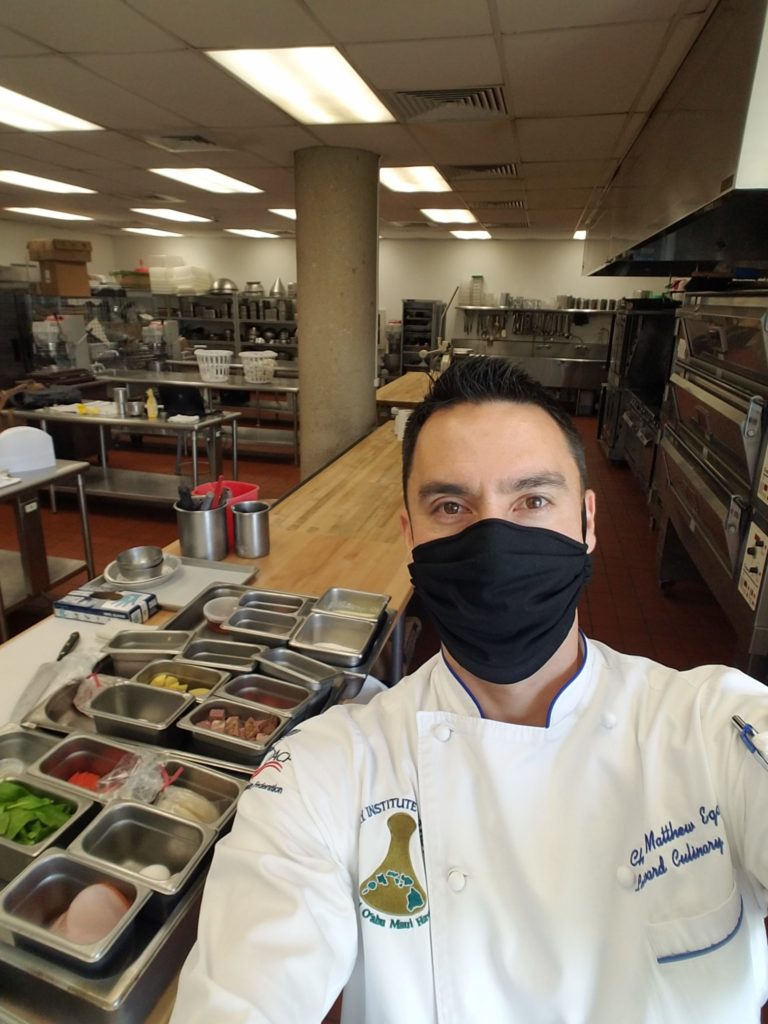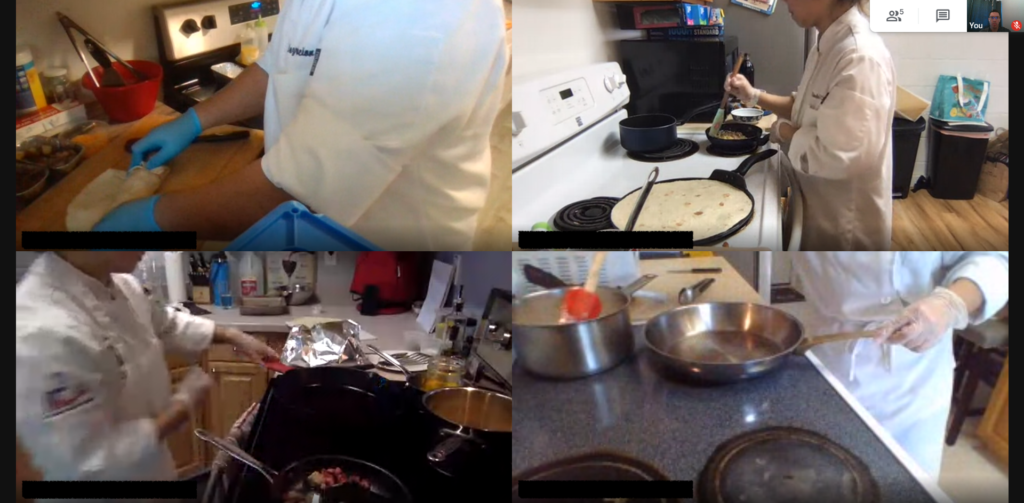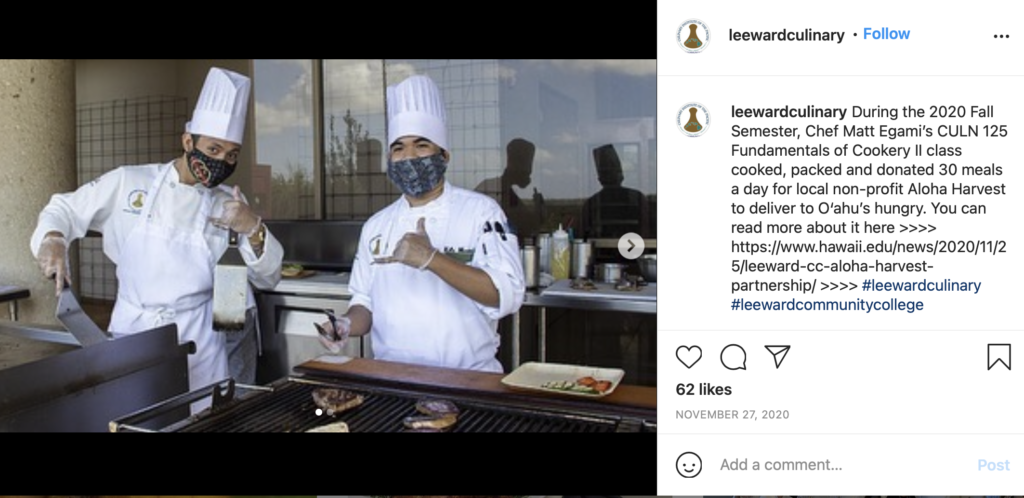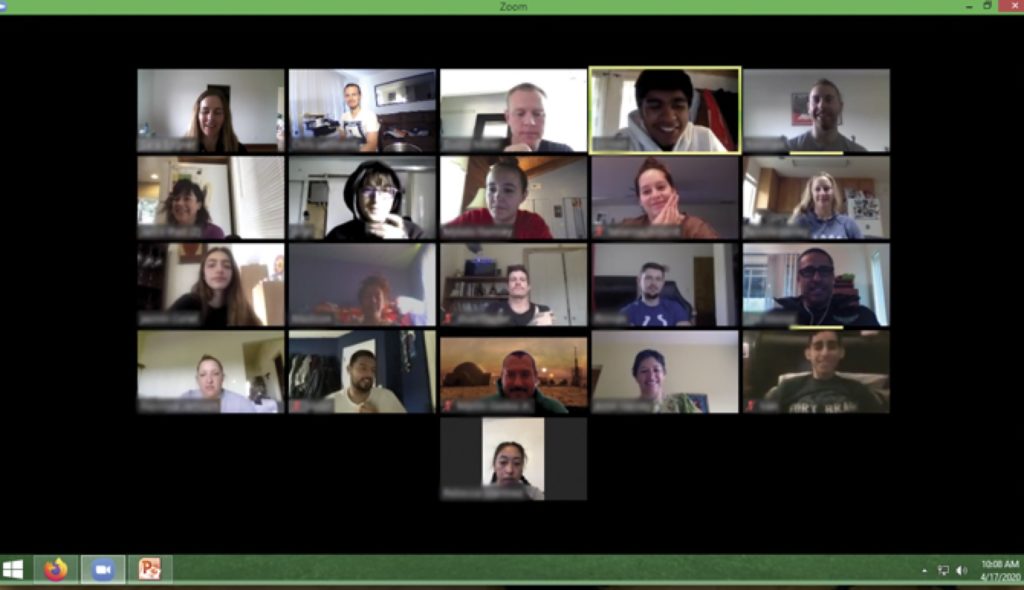
By Wyatt Otto, Content Manager With TikTok growing to become the most popular platform for traditional college students (age 18-22), more colleges are joining the platform to better connect to… Read More – So Your College is on TikTok, Now What?
Blog April 14, 2021

If only all students were as bright-eyed and bushy-tailed as this little pom is for distance learning!
Welcome back to our distance learning tips exclusive, featuring experts from community colleges all over the country!
In part one, we explored a little bit of Bitmoji with Gogebic Community College. We also took a deep dive into hands-on CTE with Barstow Community College and discovered insider classroom management tips with Sierra College. If you missed it, be sure to check out part one here: 9 Breakthrough Hacks You Really Need to Know for Fearless Virtual Learning!
In this month’s installment, get ready for some drool-worthy tips on taking culinary classes to cooking show with Leeward Community College, part of the University of Hawai‘i. And, we’ll enjoy some pro tips on promoting interaction online with South Texas College, while Mendocino College holds down the virtual fort when it comes to collaboration.
Buckle your seatbelts! You’re in for an exciting virtual ride. Bring your favorite digital tablet to take notes. And for extra credit, have an orange and a paring knife handy! Just kidding. Please leave the fruit basket carving to the professionals! 😅

Culinary, nursing, and physical therapist assistant programs — oh my! How did professors launch these intensive hands-on classes into the cloud? With determination, innovation and a whole lot of guts!

The sudden closing of campuses last March hit all of our colleges hard, but it was especially onerous for colleges in the University of Hawai‘i system, where classes are modular.
“We had the first week of the second module, and then it was spring break, and then the shut down happened,” explains Matthew Egami, Culinary Instructor at Leeward. “It was really odd timing for us.”
Over the summer, instructors spent countless hours assessing how spring went and making the next semester better. For teachers, the biggest challenge was how to keep high-quality instruction, despite having to go HD. “With culinary, what was missing was that kinesthetic part,” explains Matthew. “That was our biggest challenge.”

Luckily, the school could go hybrid in fall 2020, but spring was tricky because it was totally online. So, Matthew came up with a comprehensive schedule to get cooking with digital classtime:
“I had the most MacGyver setup,” recalls Matthew. “I had my iPad hanging from the ceiling and one laptop here and my phone on a tripod here to give them some different angles.”
According to the intrepid instructor, he was not the only one working overtime to rock online teaching. In fact, one of his fellow instructors took the challenge as an opportunity to kick start his own YouTube channel!
“I’m really proud of what we did,” says Matthew. “Given the situation, especially that super quick turnaround, we did an excellent job.”
It’s no secret that culinary connoisseurs are adept at taking the ingredients life hands them and making spectacular feasts, a la Iron Chef. For Matthew, the virtual teaching experience has similarly expanded what he thought was possible.
Beyond making him a Zoom aficionado, Matthew says, “The biggest takeaway from all of this is that we can do things differently, and it can work… It unlocked a lot of barriers to making modernizations.”

Matthew’s top tip for teaching classes online?
If he could take a time machine back to March 2020, the instructor would tell himself to stop overthinking it and trying to make everything perfect.
Even though they were online, classes were, after all, still classes. And besides cooking, teaching is what culinary instructors do best. “Regardless if we’re in person or online, you’re still the expert — you still know what you’re doing.”
And if Matthew could take a time machine into next year?
He says that you would see a new thing or two that he picked up during the pandemic for moving forward. For example, he’s committed to recording all of his cooking demos from here on out.
“I find that it’s really beneficial to students,” says the innovative instructor. “Now, they can go back and watch it over and over again, so that’s definitely one thing I absolutely plan on continuing.”
For Matthew, online instruction brings a new flavor that is here to stay on the menu.
“This really opened a lot of eyes for people to see that you can give good-quality education even in an online environment as long as you have the right strategies.”

For the RN-to-BSN Program Director at South Texas College, Dr. Christie Candelaria has always kept an engaging classroom.
Her first secret is making sure participants feel welcome. She gets to know her students and addresses them by their preferred names. The professor also cultivates inclusion by showing respect to all of her learners and being a role model.
When it comes to hands-on in health care, she provides plenty of active learning situations to the virtual classroom.
“In nursing education, it is vital that students are able to apply what they learn in classrooms and skills labs to actual situations in clinical areas,” says Christie.
Students in the program take advantage of high-fidelity simulations across the curriculum, including virtual clinical experiences to fulfill requirements. These simulations span numerous client scenarios, and afterward, students take a quiz to help them debrief and evaluate what they learned.
Blackboard discussions are just the beginning. Christie also has a wide array of interactive tools at her disposal to make learning online engaging:
Padlet is a web app where students can post and share images, text, and even videos on digital walls. The possibilities are virtually endless! From collaborative note-taking to a class document hub, the app has a variety of uses. It especially comes in handy for engaging group activities, including gathering and collaborating on research.
This primary school teacher gives a great how-to on using Padlet for learners of all ages!
In this Microsoft-powered app, teachers can set up grids, which are communities or hubs for students. Within each grid, instructors create prompts where students can post short video responses and reply to each other. It’s a great way to share work and build community. And, it’s free, simple and accessible.
Combine “PowerPoint” and “Cartoon,” and you’ll instantly understand the name of this app and how it works. For creating engaging animated presentations that are anything but “death by PowerPoint,” Powtoon is a great choice. And, basic features are free!
Online learning tools are clutch. Yet, for Christie, creating truly engaging classes is all about heart.
“I have no personal secret. The teaching strategies I use in my classes are driven by my passion for sharing my knowledge and skills with my students,” says the instructor. “It is my desire for my students to become life-long learners and innovators. “

For the brand-new Physical Therapist Assistant Program at Mendocino College, the campus closed right in the middle of its first semester. Luckily, the program was built to be hybrid, so the virtual switch went on without a hitch… And without sacrificing collaboration.
According to Program Director Sara Bogner, “Collaboration is one key to successful learning, especially in an online environment.”
Some of Sara’s tips and tricks include encouraging students to form small online study groups. They will typically connect through Zoom, text and more.
“In the online environment, it is easy for students to feel isolated,” shares Sara. “Having peer groups helps keep everyone actively involved in the learning process.”
Plus, each course has at least one large group project at the end of the semester. Depending on the class, groups have between two and four students, which helps learners get to know each other.
The group projects foster collaboration and so much more. Students also hone their interpersonal and teamwork skills while taking a deep dive into the topic at hand.
Students also share ideas on the discussion board, where there is a special place to offer instructor feedback. And teachers respond right away by making changes in the course as needed. Not only does the process make students feel like valued members of the community, but it also enriches the curriculum!

For Sara, the bedrock of virtual teaching is creating community.
“The most important aspect of successful online learning is student inclusion,” says the director. She says it takes both peer collaboration and interaction with the instructor to ensure student success. “If a student feels alone in an online class, their chances of success are significantly lower.
“Online courses should be designed to allow the students to know and regularly interact with each other and the instructor.”

Stay tuned for the finale and part three, which will be an East-Coast-Community-College extravaganza!
Don’t want to wait? Check out these posts:
Want to share your online teaching tips? Email reachout@interactcom.com for a chance to be featured in our next blog or on social media!

By Wyatt Otto, Content Manager With TikTok growing to become the most popular platform for traditional college students (age 18-22), more colleges are joining the platform to better connect to… Read More – So Your College is on TikTok, Now What?

We’re all familiar with she/her and he/him pronouns, but there’s a third set of pronouns that we need to become more familiar with, and that’s singular they/them pronouns.

In an interview with Paula Di Dio, Ph.D. in Latin American literature and cultural studies and senior director of communications & research strategist at Interact, we break down how best to communicate with Latino and Hispanic students.
Read More – Writing and Marketing to Latino and Hispanic Students